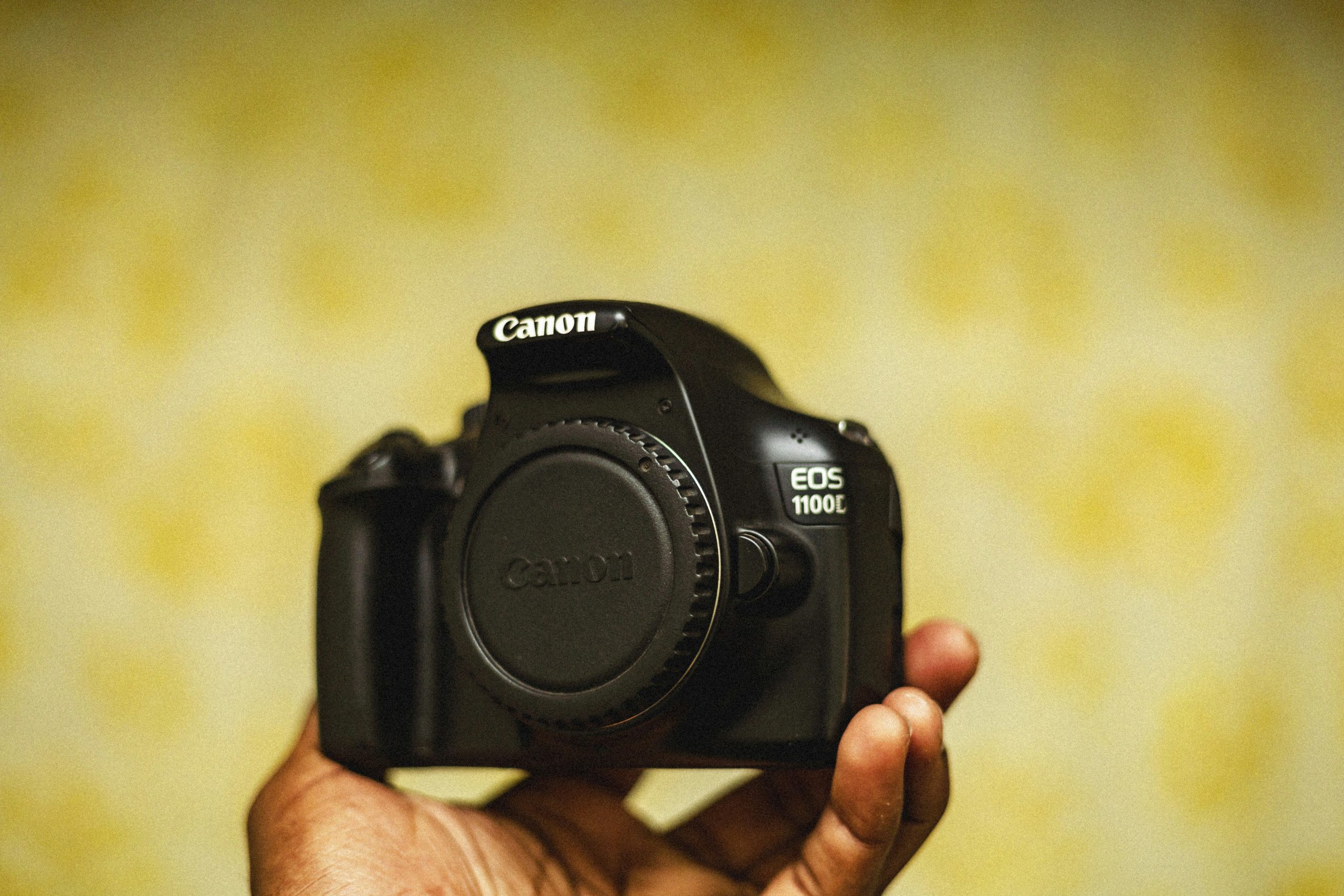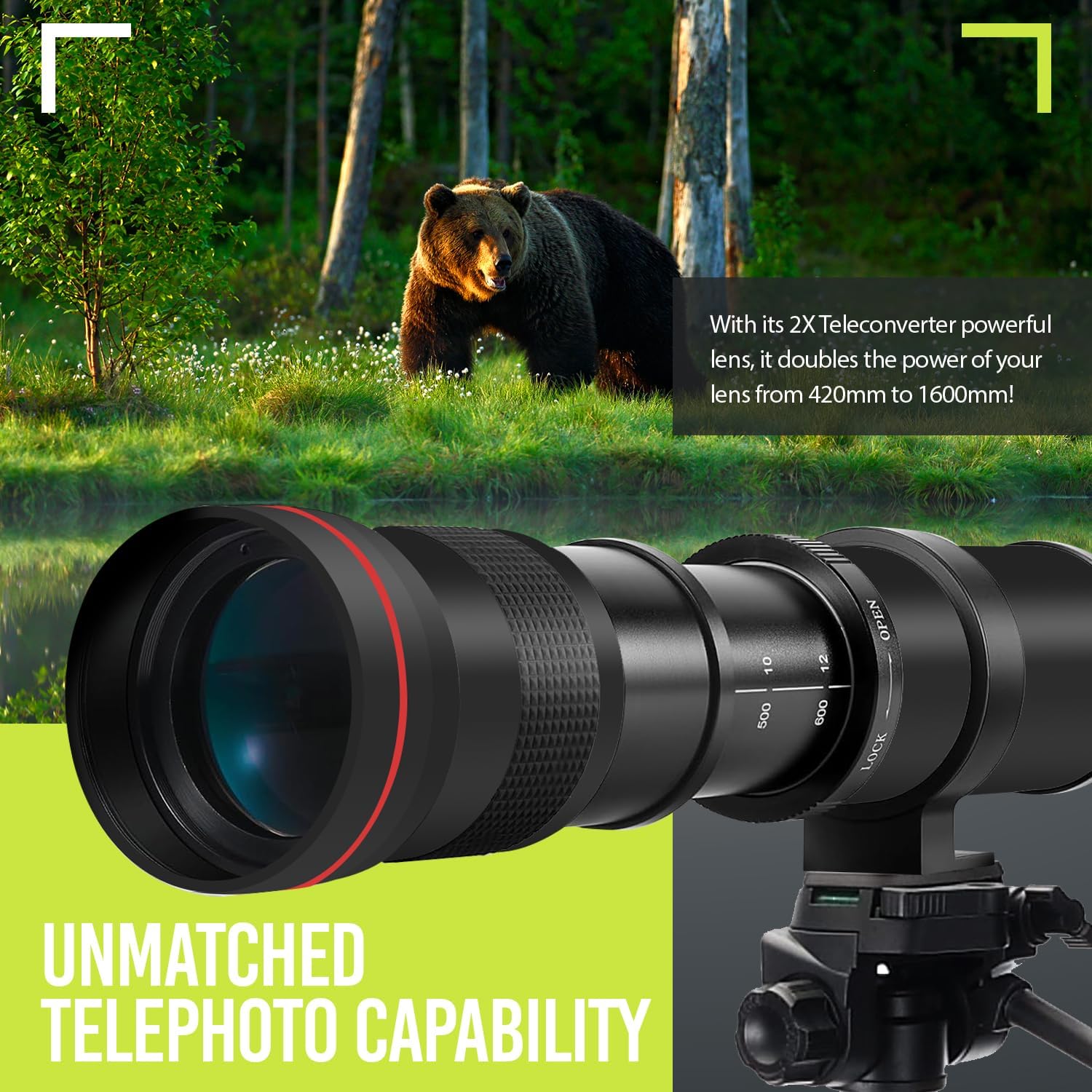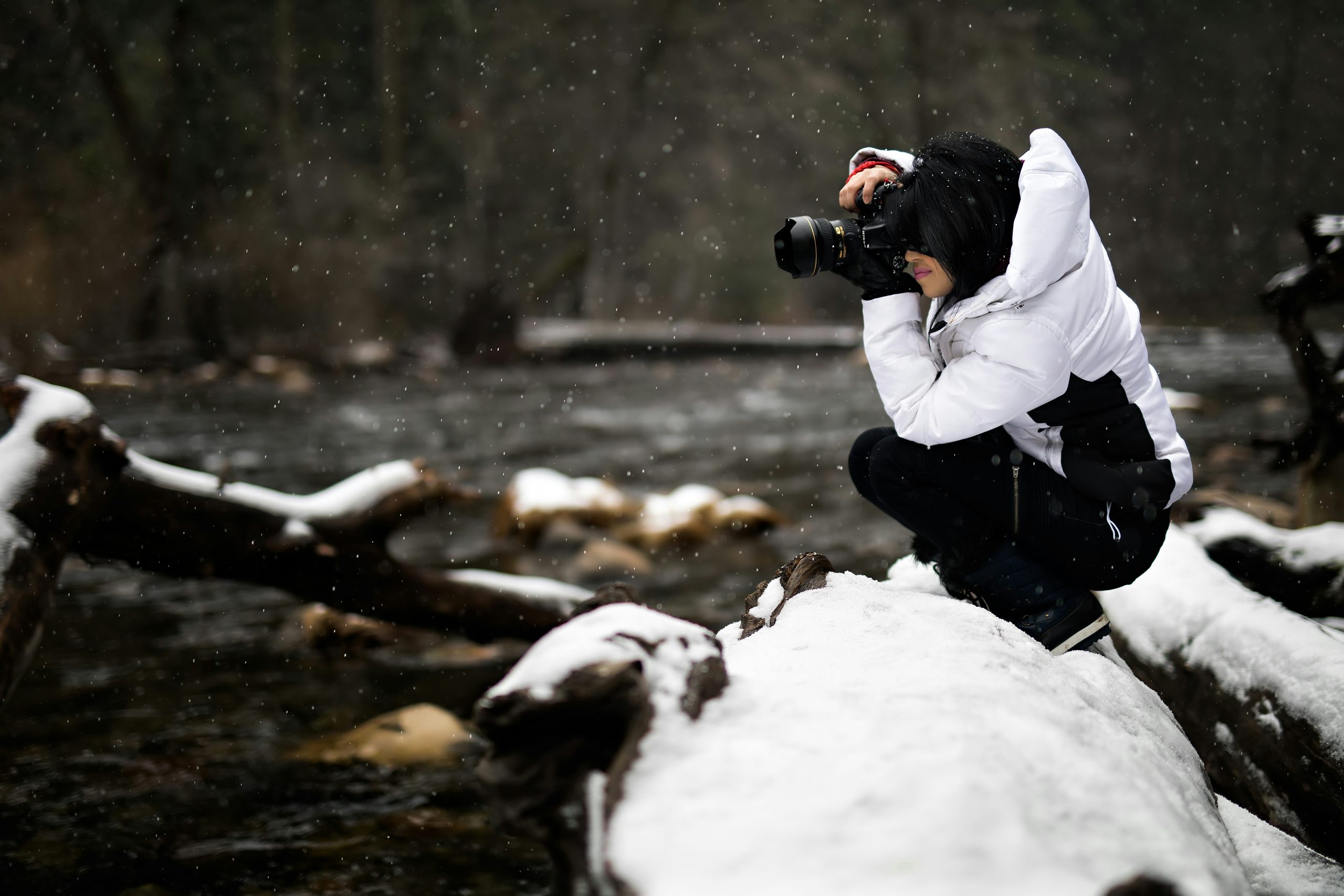Have you ever wondered if you can zoom with a telephoto lens? Well, the answer is yes! In the world of photography, telephoto lenses are known for their ability to bring distant subjects closer, allowing you to capture clear and detailed images from a distance. In this article, we will explore the capabilities and advantages of using a telephoto lens, and discover how it can enhance your photography experience. So, grab your camera and get ready to explore the world through a telephoto lens!

What is a telephoto lens?
Definition
A telephoto lens is a type of camera lens that has a long focal length, allowing you to capture images of distant subjects with clarity and detail. Unlike wide-angle lenses that capture a wider field of view, telephoto lenses offer a narrower field of view but they excel at bringing faraway subjects closer to you. With a telephoto lens, you can zoom in on the action and capture images with a sense of intimacy, making it a versatile tool for various photography genres.
Features
Telephoto lenses are characterized by their long focal lengths, typically ranging from 70mm to 400mm or beyond. They have a narrow angle of view, which allows you to isolate and magnify distant subjects while minimizing the impact of the surrounding environment. Telephoto lenses also tend to have larger physical dimensions and heavier weights compared to standard lenses, due to the complex internal optics required to achieve long focal lengths.
Common uses
Telephoto lenses have a wide range of applications across different photography genres. They are especially popular for wildlife photography, allowing photographers to capture detailed images of animals in their natural habitat without disturbing them. Telephoto lenses are also essential for sports photography, enabling photographers to freeze the action from a distance. Additionally, telephoto lenses are commonly used in portrait photography to create a flattering perspective and compress the background, resulting in beautiful, isolated portraits.
Understanding zooming with a telephoto lens
Zoom vs. focal length
When we talk about zooming with a telephoto lens, we are referring to the ability of the lens to adjust its focal length. Focal length determines the magnification and angle of view of the lens. Zooming allows you to change the focal length and adjust the level of magnification, effectively bringing distant subjects closer or magnifying a specific area of interest within the frame.
Benefits of zooming with a telephoto lens
Zooming with a telephoto lens offers several benefits. Firstly, it allows you to capture subjects that are far away or difficult to access, such as wildlife in their natural habitats or subjects at sporting events. By zooming in, you can fill the frame with the subject, ensuring that the details and nuances are captured with clarity and precision. Additionally, telephoto lenses offer a shallow depth of field when used at wider apertures, allowing for creative control over the background blur and creating separation between the subject and its surroundings.
Limitations of zooming with a telephoto lens
While telephoto lenses provide great magnification and allow for zooming, they also come with some limitations. One of the main challenges is their size and weight, which can make them cumbersome to carry around for long periods of time. Another limitation is that longer focal lengths can amplify camera shake due to their narrow field of view, making it crucial to have proper stabilization techniques in place to ensure sharp images. Additionally, telephoto lenses with wider apertures can be quite expensive, making them less accessible for hobbyist photographers with budget constraints.

Zooming capabilities of telephoto lenses
Zoom range
The zoom range of a telephoto lens refers to the range of focal lengths that can be achieved. Some telephoto lenses offer a fixed focal length, often referred to as “prime” lenses, while others have a variable focal length, commonly known as “zoom” lenses. For example, a 70-200mm zoom lens provides the flexibility to capture both wide shots at 70mm and close-up shots at 200mm, giving you a broad range of compositional possibilities.
Variable vs. fixed aperture telephoto lenses
Another important consideration is whether the telephoto lens has a variable or fixed aperture. Variable aperture lenses have different maximum apertures at different focal lengths. For instance, a telephoto lens with a variable aperture may have a maximum aperture of f/4 at 70mm but only f/5.6 at 200mm. This can impact the amount of light that enters the lens at different zoom levels, potentially affecting exposure and depth of field. On the other hand, fixed aperture telephoto lenses maintain a consistent maximum aperture throughout the zoom range, which allows for more predictable exposure and depth of field control.
Image stabilization
Image stabilization is a crucial feature to consider when choosing a telephoto lens, as the longer focal lengths can amplify the effects of camera shake. Image stabilization, also known as vibration reduction or optical stabilization, helps counteract this movement and allows for sharper handheld shots at slower shutter speeds. Some telephoto lenses have built-in image stabilization, while others rely on in-camera stabilization systems. It’s important to understand the capabilities and limitations of the image stabilization system in your telephoto lens to maximize its effectiveness.
Factors to consider when zooming with a telephoto lens
Focal length
The focal length you choose will greatly influence the perspective and composition of your image. Longer focal lengths result in greater magnification and narrower fields of view, allowing you to fill the frame with the subject and isolate them from the surroundings. Shorter focal lengths, on the other hand, offer wider fields of view and can be useful for capturing landscapes or large group shots. Understanding the different focal lengths and their effects is essential for achieving the desired visual impact in your photos.
Aperture
Aperture plays a crucial role in telephoto lens photography. The aperture setting determines the amount of light that enters the lens and affects both exposure and depth of field. When using a telephoto lens, wider apertures (represented by lower f-numbers) allow for faster shutter speeds, which can help freeze motion and minimize the risk of camera shake. Wider apertures also create a shallow depth of field, which can be used creatively to separate the subject from the background and draw attention to specific elements within the frame.
Minimum focusing distance
The minimum focusing distance of a telephoto lens refers to the closest distance at which the lens can focus and still capture a sharp image. This is an important consideration, especially when photographing subjects at close proximity. Some telephoto lenses have a relatively long minimum focusing distance, making it challenging to capture close-up shots. However, there are telephoto lenses specifically designed for macro photography that allow you to focus on subjects at extremely close distances, thereby opening up new creative possibilities.

Techniques for zooming with a telephoto lens
Using the zoom ring
The zoom ring on your telephoto lens allows you to adjust the focal length and zoom in or out on your subject. Depending on the lens, the zoom ring may be located towards the front or rear of the lens barrel. To zoom in, rotate the zoom ring in a clockwise direction, and to zoom out, rotate it counterclockwise. Practice using the zoom ring to familiarize yourself with the focal length range and gradually experiment with different zoom levels to find the desired composition for your image.
Zooming with your feet
While the zoom ring provides a convenient way to adjust the focal length, it is also important to remember that you can often achieve similar results by moving closer or further away from your subject. Sometimes, physically moving and adjusting your position can create a different perspective or composition that may not be possible with just the telephoto lens. Experiment with moving your feet and changing your shooting position to find the ideal framing for your image.
Using a teleconverter
A teleconverter, also known as an extender, is an accessory that can be attached between the camera body and the telephoto lens. It increases the effective focal length of the lens, allowing for even greater magnification. However, it’s important to note that using a teleconverter can come with some trade-offs, such as reduced image quality and potentially slower autofocus performance. Consider using a teleconverter when you need additional reach but be aware of its impact on the overall performance of your telephoto lens.
Tips for achieving sharper zoomed-in images
Using a tripod or image stabilization
When using a telephoto lens, especially at longer focal lengths, camera shake can be a significant concern. To minimize the risk of blur caused by camera movement, consider using a tripod or other forms of stabilization, such as a monopod or a bean bag. These accessories provide a stable base and can greatly improve the sharpness of your images, particularly in low-light situations where slower shutter speeds are necessary. If your telephoto lens has built-in image stabilization, make sure to enable it and understand its specific settings and limitations.
Using a faster shutter speed
To freeze the motion of your subject and minimize the impact of camera shake, using a faster shutter speed can be advantageous. A higher shutter speed allows you to capture fast-moving subjects or handheld shots without introducing blur. However, keep in mind that using faster shutter speeds may require a larger aperture or higher ISO sensitivity to maintain proper exposure, so consider adjusting these settings accordingly to ensure a well-exposed image.
Avoiding camera shake
Camera shake can greatly affect the sharpness of zoomed-in images. To avoid camera shake, practice proper handholding techniques. Hold the lens firmly and close to your body to provide stability. Ensure that your elbows are tucked into your sides, and consider using your free hand or a wall for additional support. Press the shutter button gently, or even better, use a remote trigger or the camera’s self-timer to minimize any potential movement caused by pressing the button.
Zooming with a telephoto lens in different photography genres
Wildlife photography
When it comes to wildlife photography, a telephoto lens is a must-have tool. With its ability to bring distant subjects closer, you can capture detailed images of animals in their natural habitat without invading their space. Whether you’re photographing birds in flight, safari wildlife, or elusive creatures in the wilderness, a telephoto lens allows you to capture the beauty and behavior of animals up close while maintaining a safe distance.
Sports photography
Sports photography often requires capturing fast-paced action from a distance. Whether it’s photographing soccer, basketball, or motorsports, a telephoto lens is essential in order to bring the action closer to you. By zooming in, you can fill the frame with the athletes, capturing their intense expressions and decisive moments that might otherwise be missed. The reach of a telephoto lens allows you to capture the emotion and energy of sports in vivid detail.
Portrait photography
Telephoto lenses are widely used in portrait photography for their ability to create stunning, intimate portraits with a pleasing perspective. They compress the background, making it appear closer and less distracting. By zooming in, you can isolate the subject from the surroundings, bringing attention to the facial features and capturing natural expressions. The shallow depth of field achieved with wider apertures also adds a pleasant blur to the background, further enhancing the focus on the subject.
Combining zooming with other lens types
Wide-angle lens and telephoto lens
While telephoto lenses excel at bringing distant subjects closer, wide-angle lenses are known for their ability to capture expansive scenes and include more elements within the frame. By combining a wide-angle lens and a telephoto lens, you can capture a wide variety of perspectives and create versatile compositions. For example, in landscape photography, you can start by capturing the grandeur of a scenic vista with a wide-angle lens and then switch to a telephoto lens to zoom in on interesting details or distant landmarks.
Macro lens and telephoto lens
Macro photography is all about capturing small subjects and intricate details up close. Macro lenses are highly specialized for this purpose, but they often have a limited working distance and may not be ideal for capturing subjects at a distance. By using a telephoto lens with close-focusing capabilities, you can achieve similar results in macro photography while having the flexibility to capture larger subjects or those that require a greater working distance. This combination opens up new creative opportunities for close-up photography.
Standard lens and telephoto lens
A standard lens, typically with a focal length around 50mm, is often considered a versatile all-purpose lens suitable for various photography situations. When combined with a telephoto lens, you have the flexibility to capture both wide-angle shots and zoomed-in images in a single setup. This combination can be particularly useful when you want to switch between different perspectives quickly, without constantly changing lenses. It allows you to adapt to different shooting scenarios and capture a wide range of subjects with ease.
Zooming with a telephoto lens in smartphone cameras
Built-in telephoto lenses
Many modern smartphones come equipped with built-in telephoto lenses, alongside their wide-angle and ultrawide lenses. These telephoto lenses offer optical zoom capabilities, allowing you to bring subjects closer while maintaining image quality. Built-in telephoto lenses are commonly found in flagship smartphones, providing an easy and convenient way to capture zoomed-in images without the need for additional accessories. They offer a more portable and compact alternative to dedicated telephoto lenses.
Digital zoom vs. optical zoom
It’s important to understand the difference between digital zoom and optical zoom when using a telephoto lens in smartphone cameras. Optical zoom, as mentioned earlier, involves using physical lens elements to achieve closer views of the subject. This method maintains image quality and captures more details. On the other hand, digital zoom uses software algorithms to magnify the image, resulting in a loss of image quality and potentially introducing noise or artifacts. When using a telephoto lens in smartphones, be sure to utilize the optical zoom capabilities for better results.
Conclusion
In conclusion, a telephoto lens is a valuable tool in a photographer’s arsenal, allowing for closer views of distant subjects and enabling creative compositions in various genres of photography. By understanding the zooming capabilities, features, and factors to consider when using a telephoto lens, you can capture stunning images with clarity and detail. Whether you’re capturing wildlife, sports, or portraits, the telephoto lens opens up new possibilities and enhances your ability to zoom in on the action. Whether you’re using a dedicated telephoto lens or a built-in telephoto lens in your smartphone, the ability to zoom allows you to capture images with a sense of intimacy and excitement. So grab your telephoto lens and start exploring the world through a closer lens!



